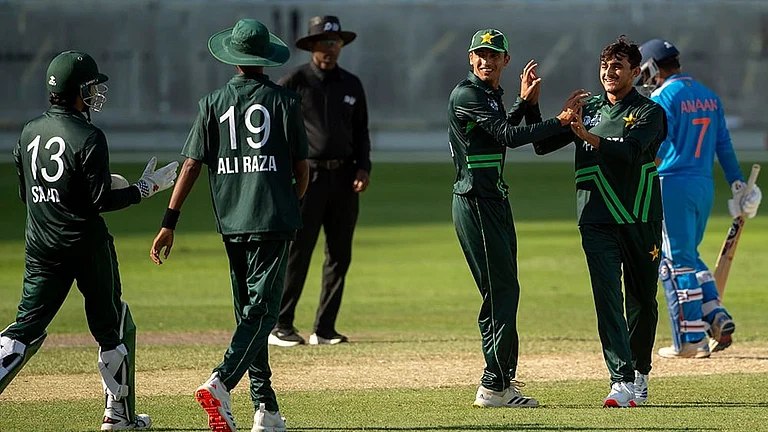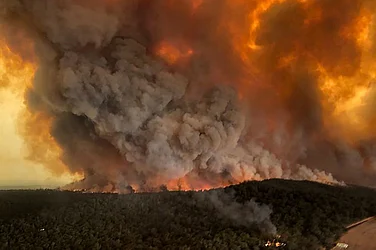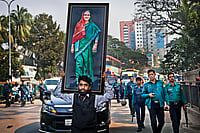The move to get back the stolen inheritance from former European colonists has been gaining momentum in recent years. People across Africa and Asia are now demanding that their former rulers return some of the cultural artefacts back to the countries where they rightly belong. Expectedly, most of the stolen booty is from the global south and is in possession of museums, and private collectors living in rich industrialised countries. Moreover, the echo of protesters that have brought down statues and monuments honouring rich slave traders and demanding reparations for the past sins of colonising powers has given an added impetus to the movement for restoring cultural icons to countries where they rightfully belong.
Many of these are prize exhibits in Western museums, or some like the Kohinoor diamond are part of the booty of the British Royal family, others are stolen and not accounted for and even today items continue to be taken out by unscrupulous traders to sell in the West.
This month's coronation of King Charles III brought the matter once again into public focus as the ruler of Ghana’s Asante people, Asantehene Otumfuo Osei Tutu II, one of the royal invitees to the ceremony later met with the director of the British Museum and raised the issue of artefacts looted from his palace during Britain’s war against his ancestors in 1874. During the coronation, people from the sub-continent were also on the lookout for the Kohinoor diamond. But Camilla did not wear it, perhaps keeping in mind the strong feelings it evokes.
The British Museum is a treasure trove of artefacts from across the world as Britain ruled the world with colonies stretching from Asia to Africa and onto the Caribbean islands. The US had thrown out the British much before any other country when Thomas Jefferson signed the Declaration of Independence in 1776. Despite this, the British continued to rule several other countries – no wonder it was said that the sun never set in the British Empire – and through this time, the British looted the colonies and brought home the trophies of war as well as riches collected from local Rajas as gifts.
The British Museum sources quoted by the BBC spoke of “exploring the possibility of lending items” for display in Ghana. The British Museum does not have the authority to return objects and must go through government channels for that.
The need to return cultural items to their rightful place is also a way to right historical wrongs. UNESCO recognises this as a former Director General of Amadou-Mahtar M’Bow had said “The men and women of these countries have the right to recover these cultural assets, which are part of their being.” UNESCO constituted an inter-governmental committee in 1978, for returning cultural property to countries of origin and its restitution in case of illicit appropriation. The committee can also play the role of facilitator in negotiations and agreements between governments. The move was initiated in 1976 when a handful of experts met in Venice to consider the restoration of artefacts and was adopted two years later.
There was the awareness that wrong had been done by the imperial powers through several centuries beginning with the first forays at colonising in the 15th century. But it is only now, with people speaking up and demanding their rights, that things have started to move. People across the world are now voicing their anger and demanding not just an apology but compensation for centuries of slavery and disenfranchisement. People long suppressed have found their voices at last and are demanding justice. Citizens groups have mushroomed in several countries to track down the artefacts and bring them home.
In December 2022, German foreign minister Annaekena Baerbock handed over 22 items to the Nigerian government. Among them were a set of Benin Bronzes following a deal made a year earlier to transfer ownership of more than 1,000 of such precious artefacts. Baerbock noted that this was Germany’s way of dealing with its “dark colonial past”. She went on to explain during the handing over ceremony in Nigeria’s capital Abuja that “Officials from my country once bought the bronzes, knowing they had been robbed and stolen”. She said previously “… we ignored Nigeria's plea to return them for a very long time. It was wrong to take them and it was wrong to keep them.” Britain, which has nearly 200 of the Benin Bronzes, is in no mood to follow Germany’s example.
And Greece’s long battle to get back the Parthenon marbles (commonly known as the Elgin marbles, as it was taken out and shipped off to the UK by Lord Elgin) from the UK appears to be going nowhere with Prime Minister Rishi Sunak in no mood to oblige. Since the 50s, Greece has been demanding the Elgin marbles but without success. Prime Minister Rishi Sunak said in March this year that there was no question of returning the marbles to the Parthenon. This despite reports earlier that they would soon be sent back to Greece as the British Museum closes in on a deal. But Sunak like Boris Johnson and Liz Truss before him has said the law would not be changed to allow the British Museum authorities to send out the marbles.
Unlike in the UK, museums in most other countries can take independent decisions. However, consultation with the government is a must and usually, when high-value items are returned, governments are in the picture. And several museums have returned artefacts.
The Museum of Fine Arts Boston returned a Roman sculpture of Herakles to Türkiye in 2011. Again in 2020 the Museum of the Bible in Washington DC gave back 11,500 looted objects to Iraq and Egypt, setting a good precedent.
An Adelaide art gallery in South Australia returned a stolen 16th-century statue of Shiva Nataraja to India in 2018. A couple of statues were also handed back in 2014 worth around $5 million. Some of this is due to the work done by India Pride Project, an organization that tracks artefacts taken out of India. Glasgow Life - a charitable organisation which runs the Scottish city's museums - signed an agreement with the Indian government to return objects of art taken out from the country.



























